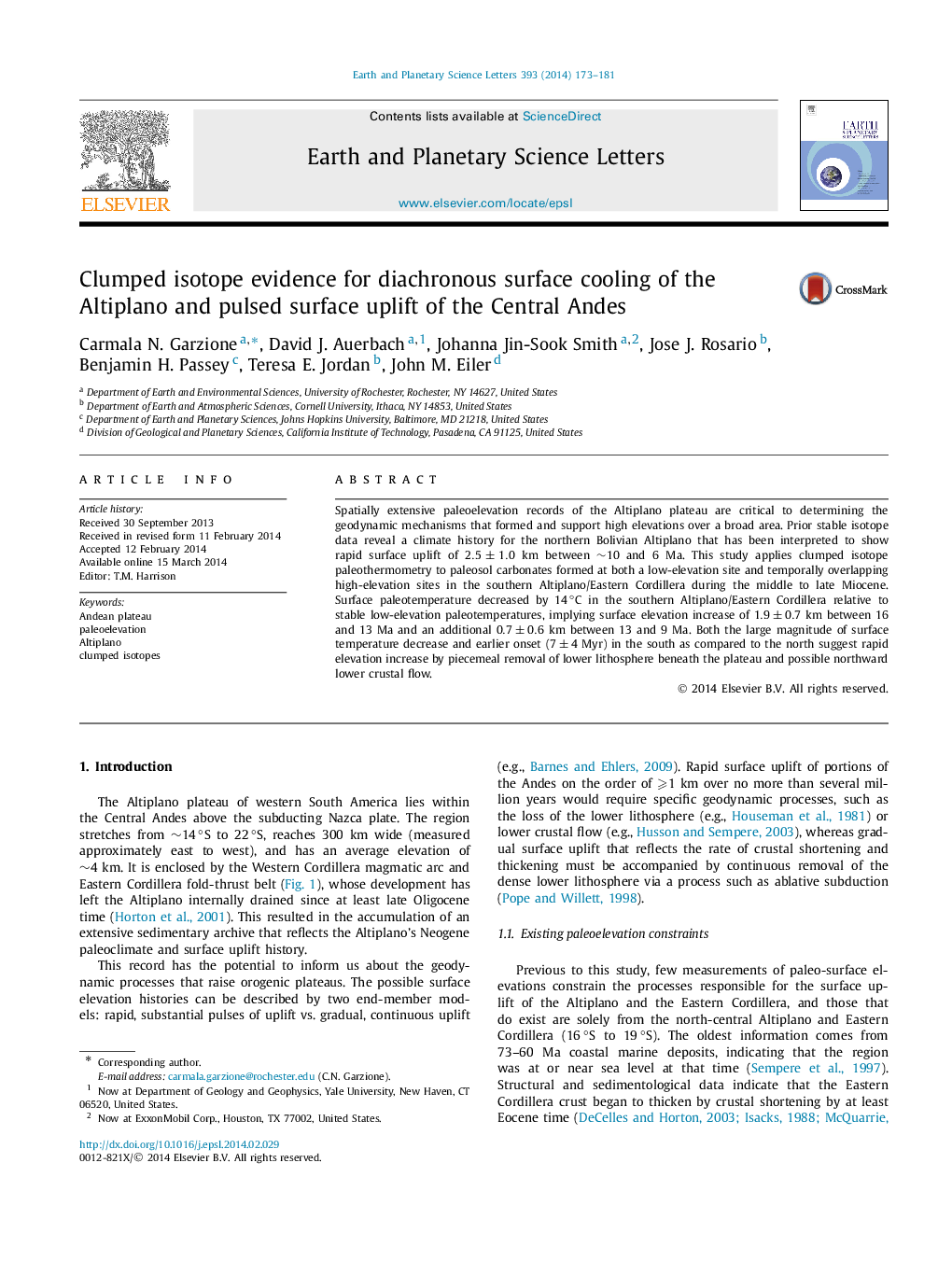| Article ID | Journal | Published Year | Pages | File Type |
|---|---|---|---|---|
| 6429336 | Earth and Planetary Science Letters | 2014 | 9 Pages |
â¢Influence of surface uplift versus climate change on the climate history of the Andean plateau.â¢New approach to paleoaltimetry comparing lowland and high elevation records of paleotemperature.â¢Uplift of the southern Altiplano preceded surface uplift of the north-central Altiplano by 7±4Myr.â¢Evaluates end-member geodynamic mechanisms for surface uplift.
Spatially extensive paleoelevation records of the Altiplano plateau are critical to determining the geodynamic mechanisms that formed and support high elevations over a broad area. Prior stable isotope data reveal a climate history for the northern Bolivian Altiplano that has been interpreted to show rapid surface uplift of 2.5±1.0km between â¼10and6Ma. This study applies clumped isotope paleothermometry to paleosol carbonates formed at both a low-elevation site and temporally overlapping high-elevation sites in the southern Altiplano/Eastern Cordillera during the middle to late Miocene. Surface paleotemperature decreased by 14â°C in the southern Altiplano/Eastern Cordillera relative to stable low-elevation paleotemperatures, implying surface elevation increase of 1.9±0.7km between 16 and 13 Ma and an additional 0.7±0.6km between 13 and 9 Ma. Both the large magnitude of surface temperature decrease and earlier onset (7±4Myr) in the south as compared to the north suggest rapid elevation increase by piecemeal removal of lower lithosphere beneath the plateau and possible northward lower crustal flow.
